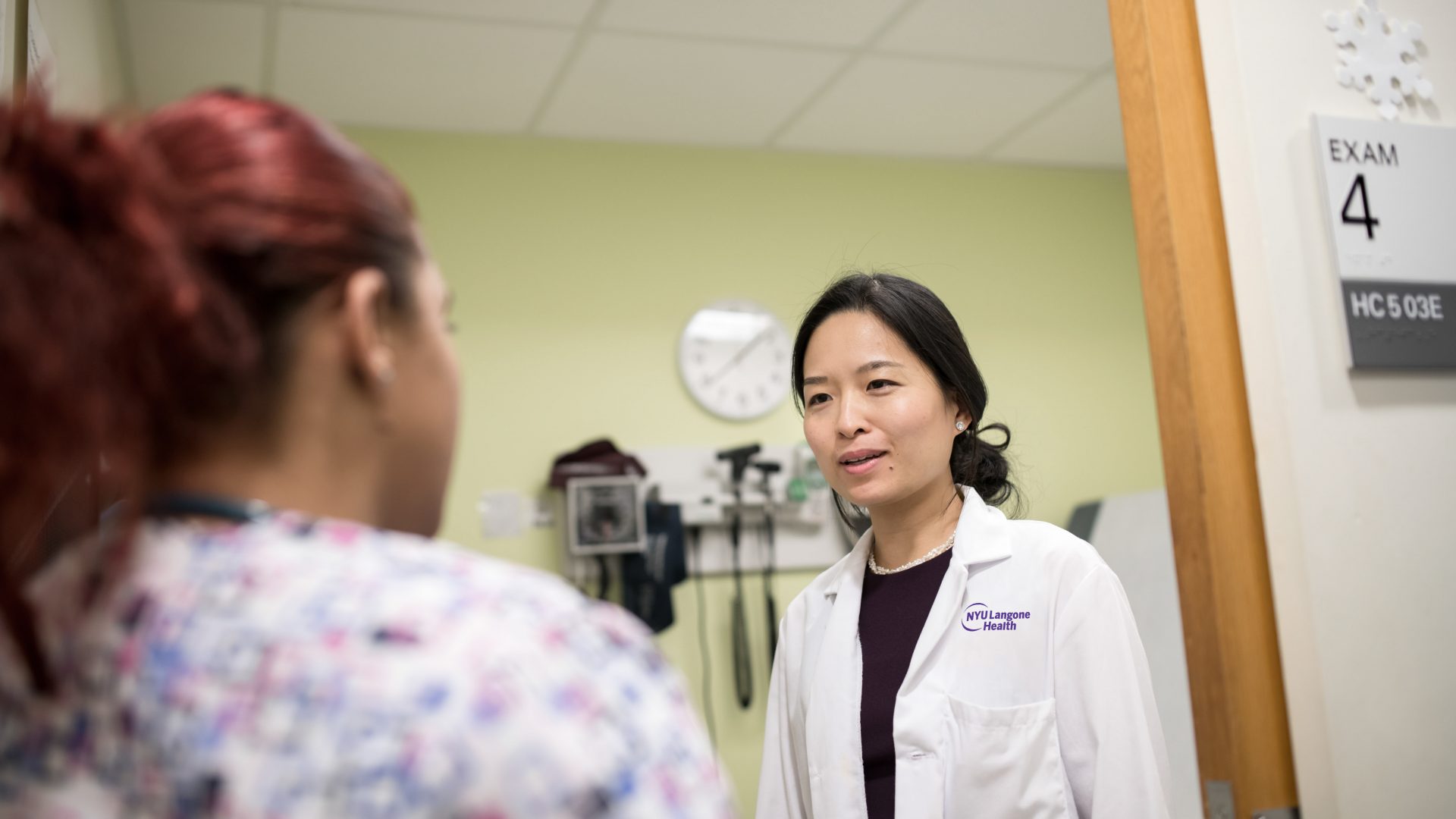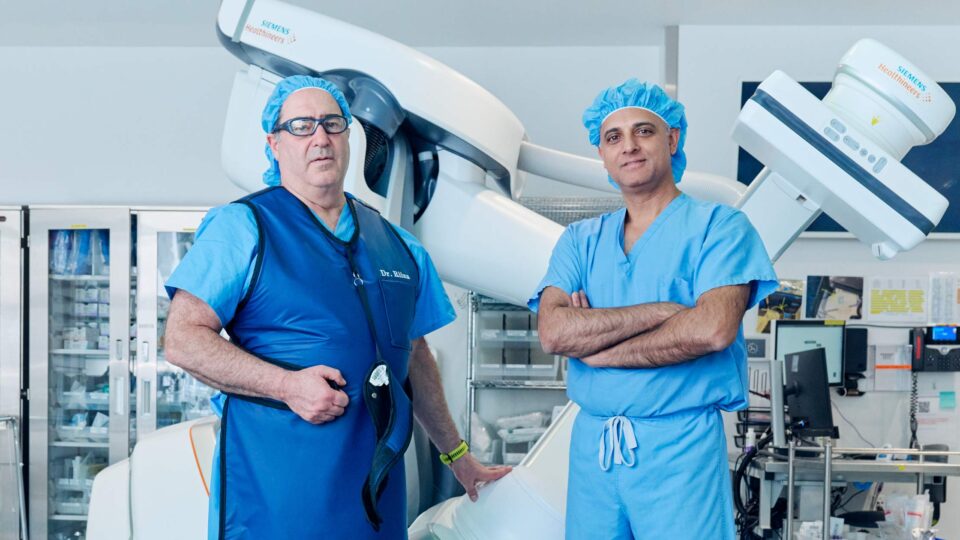Endocrinologist Melissa Sum, MD, an assistant professor of medicine and medical director of NYU Langone Diabetes and Endocrine Associates, dedicates a large part of her career to education. As content director for NYU Grossman School of Medicine’s endocrine module, she is helping to design new training initiatives that adopt innovative materials, a more case-based model, and stronger connections between lectures and clinical rotations.
Here, Dr. Sum expands upon these experiences and her view that advancing education in the pathophysiology of endocrine and metabolic disease—even for those not specializing in the field—is critical to better management of these complex disorders.
Drilling Home the Basics
Physician Focus: Dr. Sum, in your role as content director for the preclinical endocrine module, what are your main learning directives for students?
Dr. Sum: Our biggest focus is to provide first-year medical students with foundational knowledge in physiology and an early introduction to the pathophysiology of the endocrine disorders and metabolic diseases they are going to encounter. Additionally, we’re working to add more focus on prevention.
“We created and piloted virtual pharmacologic flashcards as part of the pivot toward virtual learning in 2020. They ended up becoming quite popular.”
Melissa Sum, MD
We’ve also undergone significant restructuring to adopt interactive, peer-to-peer, symptom-based learning. This is part of a school-wide initiative to shift away from lectures focused on isolated organs and systems. We prompt students with how a patient would present in clinic with symptoms like fatigue and weight gain rather than known problems like “thyroid disorder.” Then they create differential diagnoses using critical thinking across the organ systems and propose workups to identify the diagnosis, and we discuss pathophysiology and treatment.
Physician Focus: One of the new training materials you’ve helped develop is virtual flashcards. Tell us about their origin and success.
Dr. Sum: We created and piloted virtual pharmacologic flashcards as part of the pivot toward virtual learning in 2020. They ended up becoming quite popular, and we now use them across all the different modules, using even more sophisticated software.
The goal was to enhance the pharmacologic information that our students have access to, with flashcards serving as a mode to deliver spaced repetition learning. The flashcards have details regarding mechanism of action, indication for usage, and common side effects. Some flashcards also feature illustrations for visualizing the mechanism of action.
Templates as a Guide
Physician Focus: You’ve helped create templates that assist students as they navigate some of their first patient visits. Can you tell us more about their design and how they can be used?
Dr. Sum: The goal is for medical students or residents to use these templates to enhance their toolbox as they join in on the endocrine clinical rotations.
This time is very learning intensive with direct patient interaction. These learners are synthesizing all the knowledge they’ve learned during our course or during their own medical school course as they’re meeting with patients and figuring out the diagnoses and treatment plans. For a seasoned physician, this comes naturally because of honed knowledge on questions to ask and internalized illness scripts. For someone in the learning phase, they have all the foundational information, but it still needs to be put into neat categories for them to make sense of the patient case in front of them.
“Regardless of the field they go into, everyone’s going to see patients with endocrine disorders.”
To assist with the categorization of information, I created templates tackling the most common endocrine disorders that learners will encounter both on the inpatient and outpatient side, such as diabetes and thyroid disorders. That way, when meeting with a patient with diabetes, for example, the learner is armed with the right questions to ask from the onset to later synthesize the correct diagnosis—whether it is type 1, type 2, or medication-induced diabetes—and then to develop a targeted and comprehensive treatment plan.
Physician Focus: You mentioned you are researching their effectiveness.
Dr. Sum: Yes, this is an IRB-approved project. We are giving templates to a subset of learners and, through surveys given after the endocrine rotation, we’ll evaluate whether the templates helped learners better understand and integrate the workup and diagnosis of endocrine disorders.
Signs of Success
Physician Focus: How has the feedback you’ve received so far informed your educational vision?
Dr. Sum: The feedback is typically very positive. Students really enjoy learning endocrinology, which is what I hope to inspire.
Regardless of the field they go into, everyone’s going to see patients with endocrine disorders. For common disorders like diabetes and obesity, it’s important for anyone within the healthcare field to know the basics of treatment and prevention. But even for uncommon disorders, like acromegaly and endogenous Cushing syndrome, these patients can present to doctors in almost any specialty, and the diseases can sometimes be insidious in onset and hard to diagnose.
Recently, a medical student told me that she helped diagnose an acquaintance with acromegaly after learning about it in our endocrine course! It was extremely gratifying to see our students helping patients so early in their training.
Working with AI
Physician Focus: You’re interested in artificial intelligence (AI) applications for medical education and endocrine training in particular. Where are you at in exploring the emerging technologies?
Dr. Sum: AI is certainly poised to change the course of work in medicine and education. NYU Langone is already positioned as a leading institution for advancing AI technologies, including being one of the few—if not the only—top academic medical centers with its own dedicated, HIPAA-compliant instance of ChatGPT.
Within the medical school, we recently held a lengthy brainstorming session about the use of AI in medical education and how it could be helpful in organizing vast troves of information and creating content—both for learners and educators. We’re now actively planning how to use these new tools with such a big capacity for information delivery into our modules, starting with basics such as generation of more practice questions, and beyond.






